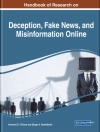From illegal drugs, stolen artwork, and forged trademarks, to fraud in financial markets — the phenomenon of illegality in market exchanges is pervasive. Illegal markets have great economic significance, have relevant social and political consequences, and shape economic and political structures. Despite the importance of illegality in the economy, the field of economic sociology unquestioningly accepts the premise that the institutional structures and exchanges taking place in markets are law-abiding in nature. This volume makes a contribution to changing this. Questions that stand at the centre of the chapters are: What are the interfaces between legal and illegal markets? How do demand and supply in illegal markets interact? What role do criminal organizations play in illegalmarkets? What is the relationship between illegality and governments? Is illegality a phenomenon central to capitalism?Anchored in economic sociology, this book contributes to the analysis and understanding of market exchanges in conditions of illegality from a perspective that focuses on the social organization of markets. Offering both, theoretical reflections and case studies, the chapters assembled in the volume address the consequences of the illegal production, distribution, and consumption of products for the architecture of markets. It also focuses on the underlying causes and the political and socialconcerns stemming from the infringement of the law.
Jens Beckert & Matias Dewey
Architecture of Illegal Markets [EPUB ebook]
Towards an Economic Sociology of Illegality in the Economy
Architecture of Illegal Markets [EPUB ebook]
Towards an Economic Sociology of Illegality in the Economy
Купите эту электронную книгу и получите еще одну БЕСПЛАТНО!
язык английский ● Формат EPUB ● страницы 304 ● ISBN 9780192514141 ● редактор Jens Beckert & Matias Dewey ● издатель OUP Oxford ● опубликованный 2017 ● Загружаемые 3 раз ● валюта EUR ● Код товара 7971893 ● Защита от копирования Adobe DRM
Требуется устройство для чтения электронных книг с поддержкой DRM












